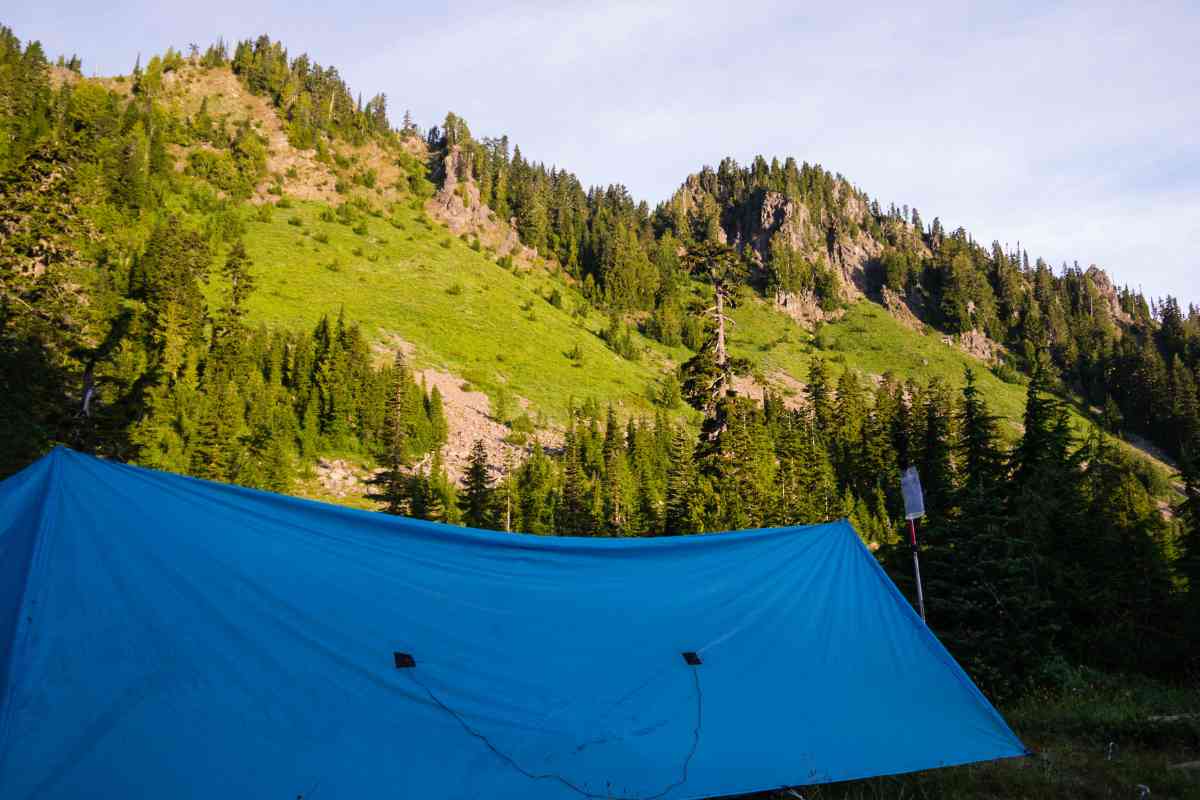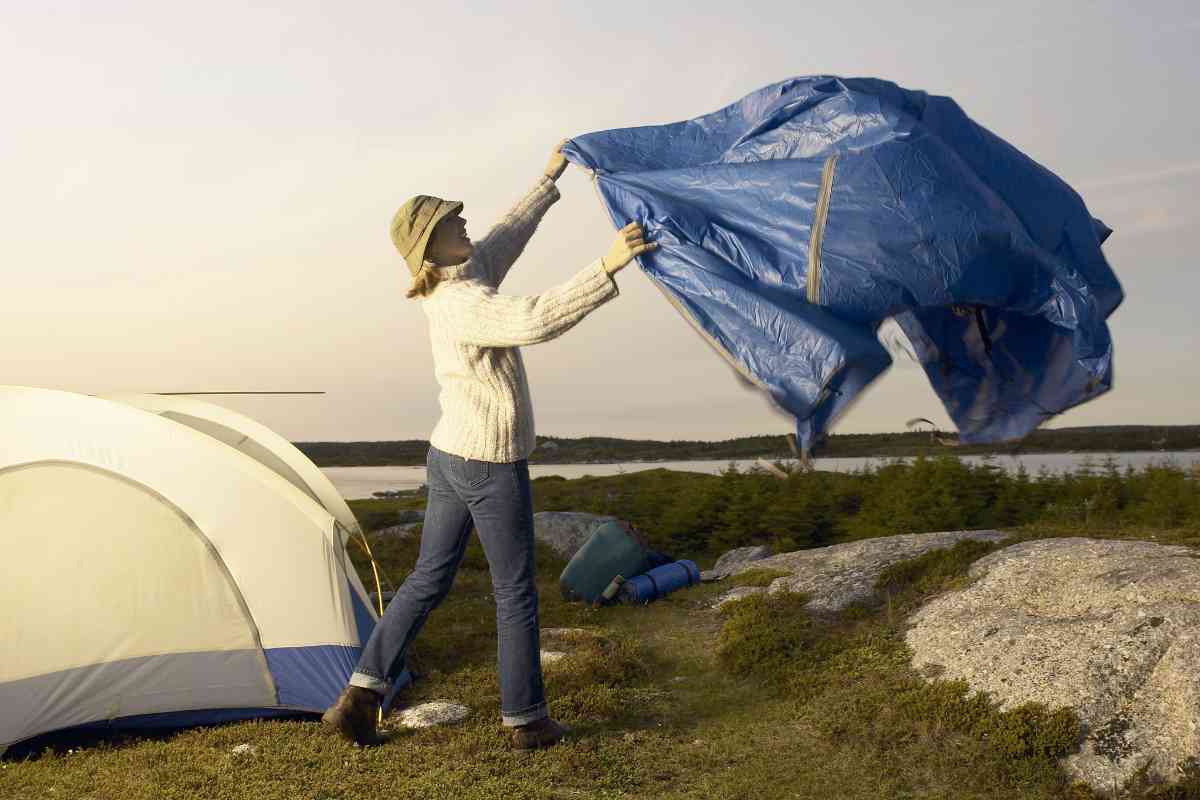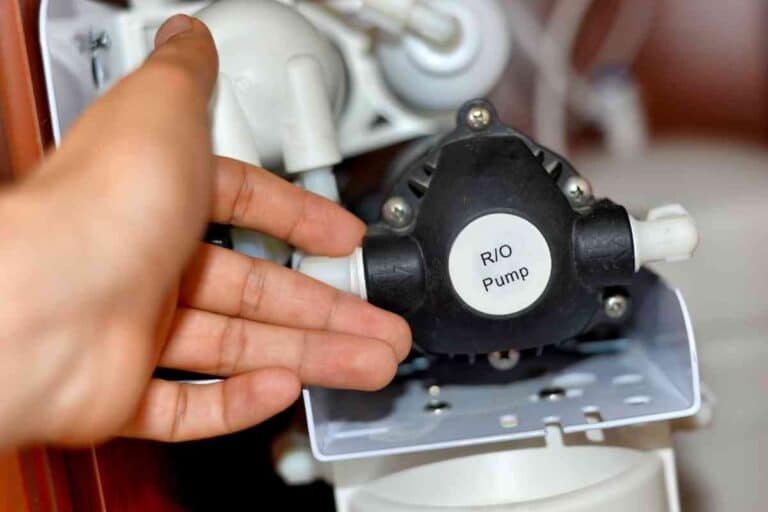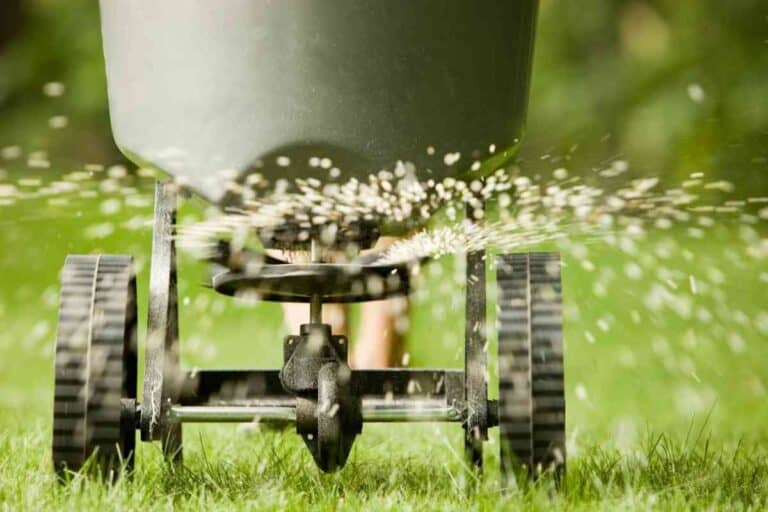5 Different Ways To Make An Effective Tarp Tent
Have you been thinking about trying to make your own tarp tent, and you are hoping to find a way to make a tarp tent work?

What’s the best way to make a tarp tent?
Here are 5 creative ways to make a tarp tent that have actually been proven to work:
- A Frame design tarp tent
- C Fly Wedge design tarp tent
- Flat Roof Lean design tarp tent
- The Tortilla design tarp tent
- Basic Fly Line Roof design tarp tent
There are few things I like more than camping, and the more simplistic I can make it, the better. I don’t mind using a store-bought tenrat, but I love the challenge of trying to find ways to make my camping experience as simple and straightforward as possible.
Learning some different ways to make a tart tent has not only been fun, but I think it can come in handy when I find myself needing a quick tent or just wanting to challenge myself.
5 Creative Ideas to Make a Tarp Tent that Actually Works!
Tents have been around for a long time, and they have served an important role in our society.
Today, tents tend to be more than just shelters and are often used for recreational fun as well as for practical purposes.
But tarp tents have continued to be pretty much the same as they have always been.
A tarp tent is usually made with a plastic or nylon material, and tent pegs, poles, and/or wire and rope are used to secure the tent and get it to stay upright or hang a certain way.
Though tarp tents are probably the easiest form of shelter to have when you are in the great outdoors, they tend not to be as practical as other types of tents, mainly because of their design.
Tarp tents do not have flooring or four sides. They also don’t have mesh material or even doors or windows.
A tarp tent isn’t the most practical form of shelter when you are camping. But – in a pinch, a tarp tent is better than having nothing.
The other nice thing about a tarp tent is its portability and cost.
Unlike traditional tents, which can be cumbersome, tarp tents are so lightweight you almost won’t realize you are carrying them.
They also cost significantly less than other forms of tents and can be purchased just about anywhere.
Many backcountry backpackers and campers like to use tarp tents because of their practicality, low cost, and ease at which they can be assembled. They are also easy to put into a backpack and take up barely any space.
Just remember, tarp tents are not ideal for extreme weather and offer no protection against wildlife or insects.
Anyone interested in a tarp tent is going to have no trouble finding plenty of creative ways to manufacture one of these simple shelters.
1. A-Frame Design

The most common tarp design that most people start with when they are designing a tarp tent is the A-Frame design.
The A-Frame is about as simple as it gets, as long as you have a tarp, a strong line, and some tent stakes.
String your line between two trees and tighten it off. Then, lay the tarp over the line and secure each side of it with your tent stakes.
The great part about this configuration is that if you end up having weather issues, the peak roof won’t allow for anything to sit on the tent.
This is an excellent beginning tarp tent and may be all you need for a good tarp tent experience.
2. C Fly Wedge
A C Fly Wedge tarp tent is going to be similar to an A-Frame design but allows for there to be some shelter from the ground as well.
The fact that a typical A-Frame tarp tent provides no shelter from the ground makes it a bit more unrealistic in most situations.
The ground isn’t just uncomfortable, but it may be soggy, wet or full of rocks and sticks (not to mention creepy crawlies!) that are going to make your evening slumber unpleasant or maybe even dangerous.
When you make a C Fly Wedge tarp tent, you add additional protection to the ground that many tarp tents don’t actually have.
You’ll want to lay the tarp on the ground where you plan to stake your camp. Find a good, flat spot that’s in between two trees that you can tie a rope between.
Begin by securing the bottom part of the tarp to the ground, using the tent poles, and be sure to stretch it tight.
Then, place a rope across the tarp where you want the fold to begin. Secure the rope by tying it onto two more tent poles on both ends of the fold.
Next, tie another rope between the two trees that you have placed the tarp underneath. Pull the rest of the tarp up and over the rope and allow it to drape down on the other side. Once you’ve made it taught, go ahead and use your final tent ties to secure the final part of the tent.
3. Flat Roof Lean-To
A Flat Roof Lean-To is ideal when you have more people or things you are trying to keep under the shelter. It provides a good amount of shade protection as well as keeps you and your things dry.
The one side of the tarp that is secured will serve as a great wind barrier if you get caught in any gusts, and the top will allow for plenty of shade and shelter as well.
Making the Flat Roof Lean-To is not terribly complicated.
Begin by staking two poles the same distance away from each other and the same length away from the trees you have chosen.
Then, put the tarp over the roof line and pull it taught on to the other side. Make sure you use the tent poles to hold the tarp down on the other side.
When you are done, you should have a nice flat roof and one-side that is at a 45-degree angle from the poles.
Though there is no ground cover on this tarp tent, you could always add another tarp to lay on the ground if you have the room to carry it, and want to spend the money to do so.
Just remember, this is also not a great tarp choice if you have a heavy rain or snowstorm that may end up sitting on top of the top and weighing it down.
If not, the Flat Roof Lean-to is still a good option for a tarp tent when you need more space than a typical A Frame of C Fly Wedge type can give you.
4. The Tortilla
The Tortilla is exactly as its name implies.
This tarp is best for when you want ground coverage and want shelter but don’t have two trees readily available. What you will need is either one tree or a pole to which you can tie off one corner of your tarp.
Start by tying your rope to the pole or tree. Then, lay down your tarp in a diamond-type shape so that one end is facing toward your pole or tree.
Now, fold your tarp in half and tie off a rope across the middle of the tarp where the crease was made. Secure the other end on the ground.
Much of this design’s success is going to be based on having an adequate number of tent pegs so that each corner can be secured.
This may not be the ideal shape every time, but it’s a great option when you don’t have two well-sized trees or when having a protected bottom layer is as important to you (if not more so) than having a sheltered top part for your tent.
The tortilla tarp tent will be best when the ground is uncomfortably wet to be able to sleep on without a waterproof cover and when you are less worried about rain than you are about wind being kept at bay.
This has always been one of my favorite tarp tents when I’m in a hurry and need more protection from wind than I do from rain, and when the ground is too soggy to sleep on comfortably.
The tortilla is an easy tarp tent to put up quickly.

5. Basic Fly Line Roof
This tarp tent is going to be ideal when you are more concerned with a good shade cover than anything else.
Stringing a large tarp between multiple trees or using poles will give you a good amount of square footage that will now allow for a pleasant place to sit, eat, nap or conduct other activities out of the harshness of the sun.
You can sleep under a basic fly-line roof as well, but like some of the other tarp tents on this list, you won’t have any protection from the ground unless you put another tarp down on top of it.
This tent is easy to put up as long as you have enough trees, tent poles, and rope.
Before you install this tarp tent, you’ll need to figure out how high off the ground you want it to be.
Will people be moving around at full height underneath it?
Or is it more for sitting, visiting, or lying down?
The other thing you’ll want to consider is where to pitch the tent. You’ll need enough trees or poles to properly stake the Basic Fly Line Roof so that it will fully function as it’s meant to.
One downside to this tent is that heavy rain may pool on the top and make the tent top start to sag.
Key Takeaways
- A tarp tent is usually made with a plastic or nylon material, and tent pegs, poles, and/or wire and rope are used to secure the tent and get it to stay upright or hang a certain way.
- Unlike traditional tents, which can be cumbersome, tarp tents are so lightweight you almost won’t realize you are carrying them.
- Five creative ways to make a tarp tent that has proven to work are the A-Frame, the C Fly Wedge, the Flat Roof Lean-to, the Tortilla, and the Basic Fly Line Roof.






